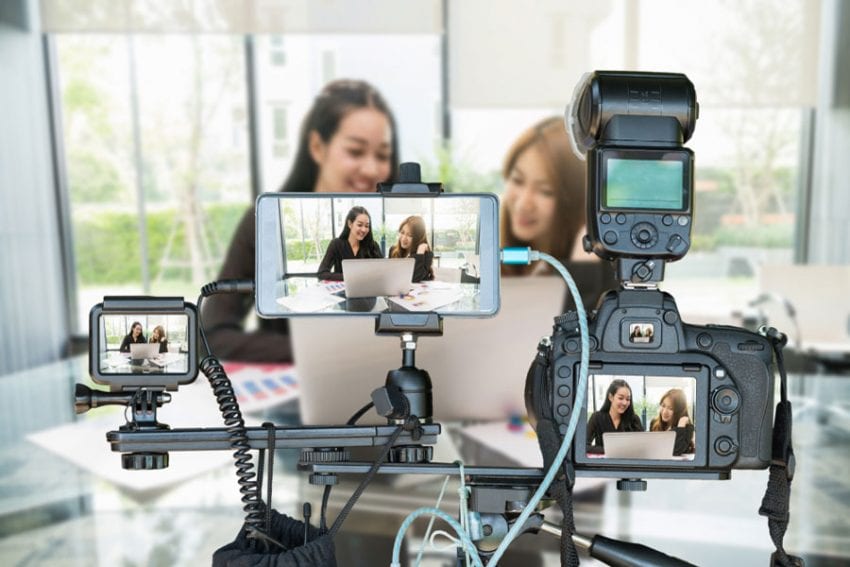Training new hires requires a significant investment of your time, effort, and finances. To train your team members faster, you can refine your training protocols over time and add them to your policy and procedure manuals, but when was the last time you saw an employee flipping through the company manual? Probably never. That’s because most manuals get tucked away in a drawer, never to be seen again.
Policy and procedure manuals are out-of-date and won’t improve employee efficiency. Creating a video training library will.
Are you recording meetings to use as training material?
From the inside, you may not think meetings have anything to offer new employees. Meetings are just discussions regarding the details of specific projects that a new hire wouldn’t understand. However, meetings can give new hires a fantastic view into how your company deals with client requests, challenges, and the overall flow of teamwork. Video of your team in action is the fastest way to communicate company values and expectations to new team members.
If you’re not recording your meetings, internal training sessions, and presentations, it’s time to start. Not every meeting or training session will contain useful material and that’s okay. The point is to record them so you isolate the moments that are of value and turn them into a training tool.
Your trainees need a digital library of content

Imagine that all of your employees had access to an extensive digital library of content related to their role in the company. A digital library like that would be a priceless tool for everyone, but especially for new hires.
According to Forbes Councils Member David Finkel, “by creating a series of video modules in two-to-four-minute segments, you can create a “living” archive that will engage your team members and help them learn more efficiently.”
According to video trend statistics, 59% of executives would rather watch one than read text. If executives don’t want to read text, your new hires probably don’t either.
Get setup with a professional video recording system

Before you set up an iPhone in the corner of your meeting room, consider that capturing quality video and audio is just as important as the content of your meeting. If the audio is fuzzy or faint, or the quality is poor, it won’t make good training material.
The biggest limitation of using an iPhone is the lack of storage space for lengthy, high-quality videos. Even if you had endless storage, you’d still have to transfer it to your computer for editing. If you wanted to share it before it was done, you’d have to upload it to a private server and employ complex security protocols to protect your content.
A simpler solution is to use a professional recording system built for corporate meetings and presentations. If you’re going to build a digital library of extensive content, you need a professional system that stores your content in the cloud and makes it easily accessible to your team.
For an idea of how this technology works, check out the VALT system from IPIVS.com. It’s a fully-scalable recording system built for small businesses and large corporations. The VALT system utilizes state-of-the-art IP cameras, top-quality auto-gaining microphones, and multiple cameras in both movable and fixed positions to capture video from multiple angles. You can store an average of 16,000 hours of high definition video on your account. To review them, all you need is a browser.
Perhaps the most impressive feature is that all recorded content is securely encrypted so you don’t have to worry about hackers gaining unauthorized access to your recordings. With the rising number of data breaches, encryption is no longer an option.
Hire a professional videographer to create your training library

If you’re not a videographer, hire one to create your training videos. Editing video isn’t as easy as it looks. Before handing off the project, create an outline for what you’d like to see and be as precise as possible. For example:
- Go through your raw footage and document the content you want to use according to timestamps. Don’t try to cut the footage for your videographer, since they will need a certain amount of lead before and after the timestamps you want to use.
- If you prefer specific types of transitions, document that as well. For instance, you might want to use a crossfade or cross dissolve rather than jump cuts whenever possible. For some reason, jump cuts have become a trendy style rather than a utility, so make sure to specify if you don’t want jump cuts as a style.
Train your team faster with video
Video training works better because it’s more engaging, information is retained better and longer, and it’s easier to break down complicated information. When team members learn better, they also learn faster. If you haven’t created a training library yet, now is a great time to get started.









